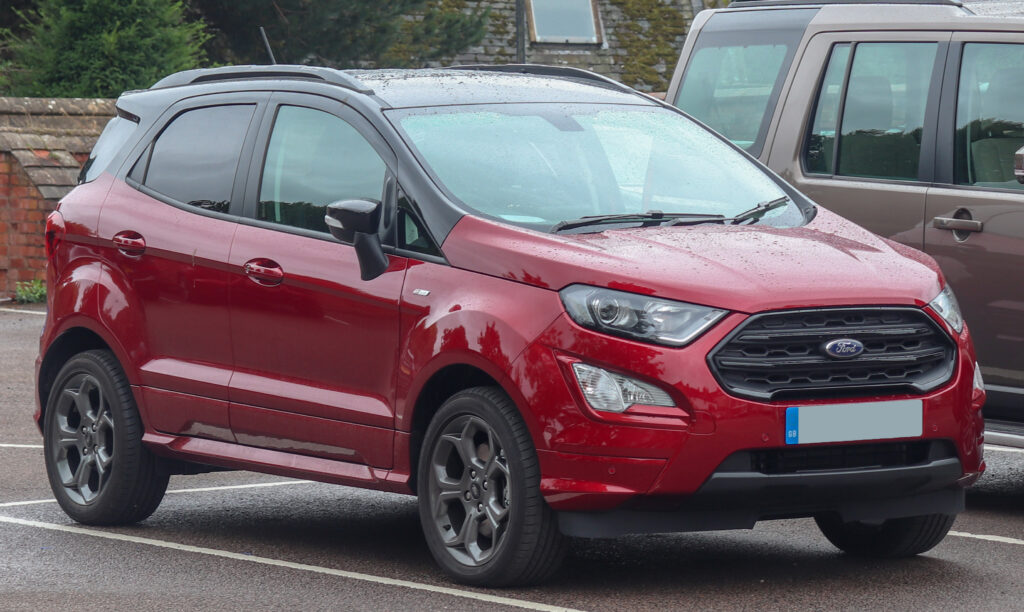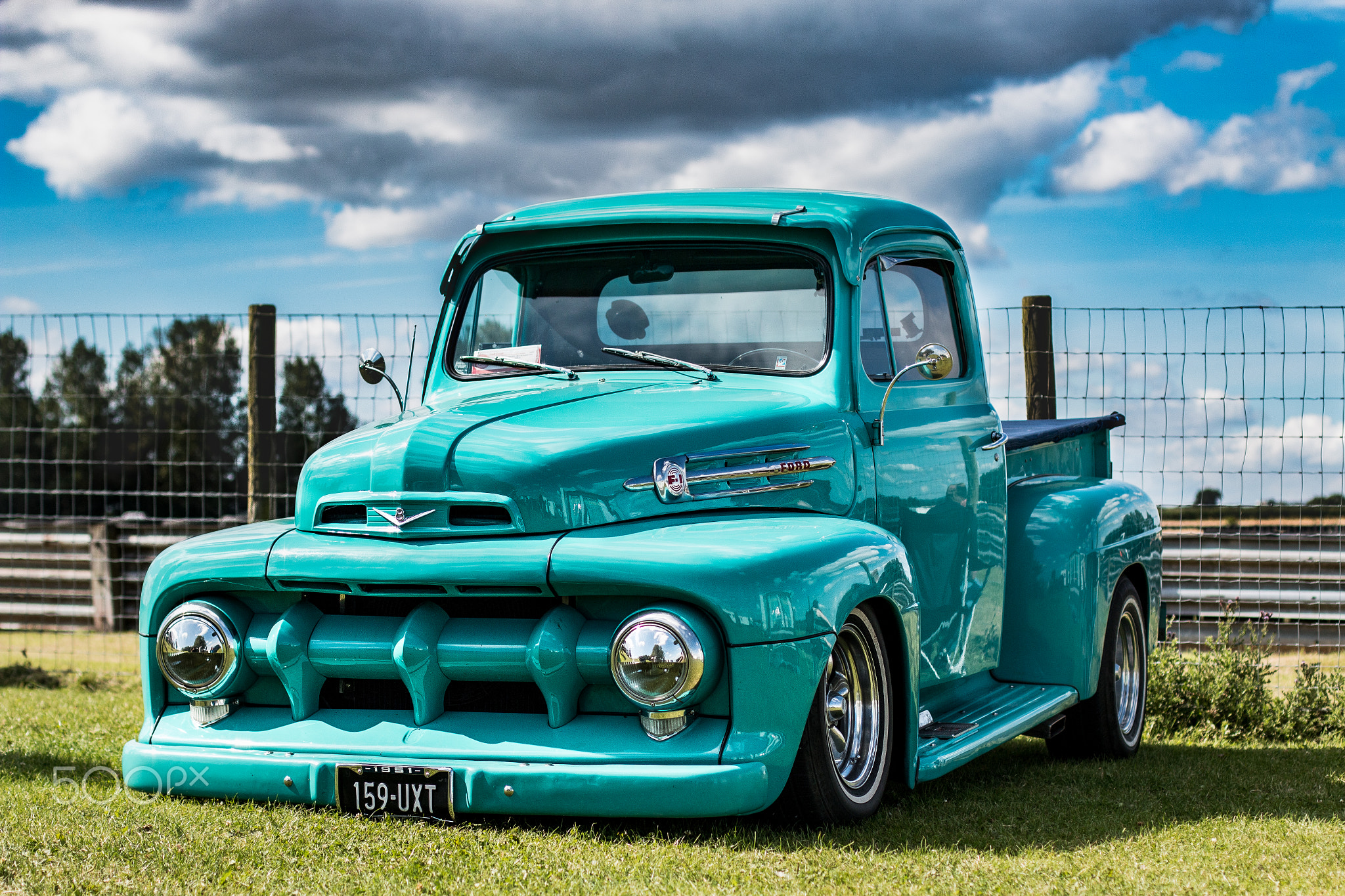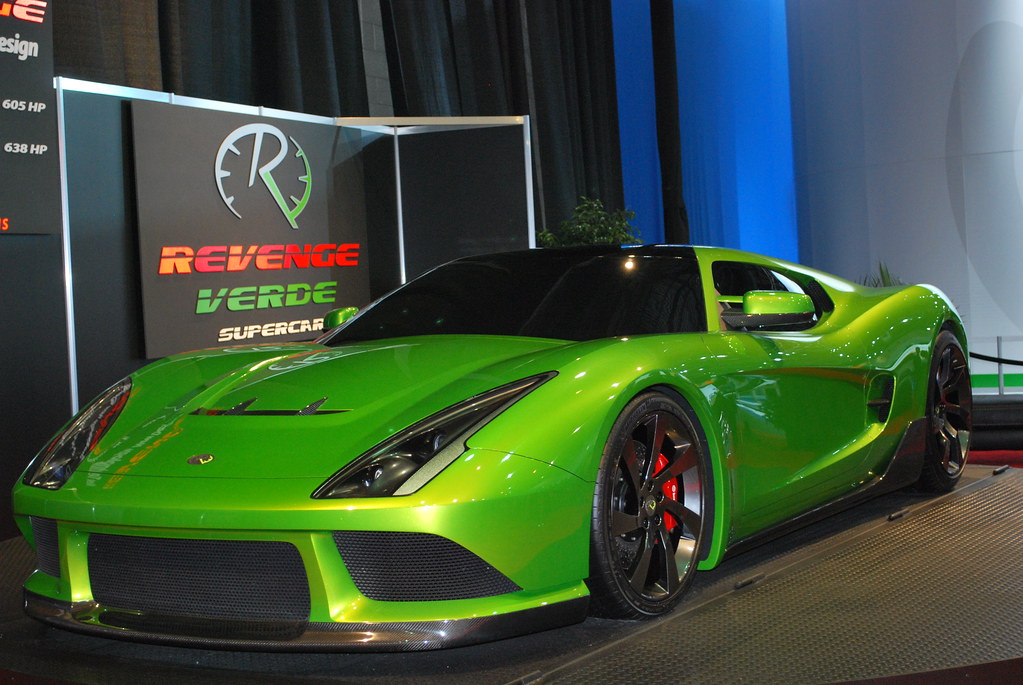
Even the biggest names in the automotive industry have had their share of design missteps, proving that not every innovation hits the mark. These monumental flops, often the result of bold risks or misguided trends, serve as stark reminders that the road to automotive greatness is paved with both triumphs and cautionary tales. It’s a fascinating aspect of car manufacturing: the blend of engineering prowess, market foresight, and aesthetic appeal, where even one miscalculation can derail an entire project.
Indeed, the automotive world has seen many successes, but it has also experienced notable failures that stand out for their spectacular nature. Vehicle models that were expected to revolutionize the industry often ended up being cautionary tales about overambition and misjudgment. For car enthusiasts, understanding these missteps offers invaluable insight into the complexities of design, production, and consumer perception.
In this first part of our in-depth exploration, we’ll peel back the layers on some of the most infamous automotive design failures from major manufacturers. We’re not just pointing fingers; we’re analyzing what went wrong, why these vehicles failed to resonate with the masses, and the enduring lessons they’ve imprinted on the industry. Prepare for a candid look at cars that, despite their creators’ best intentions, simply couldn’t hack it in the highly competitive and often unforgiving marketplace.
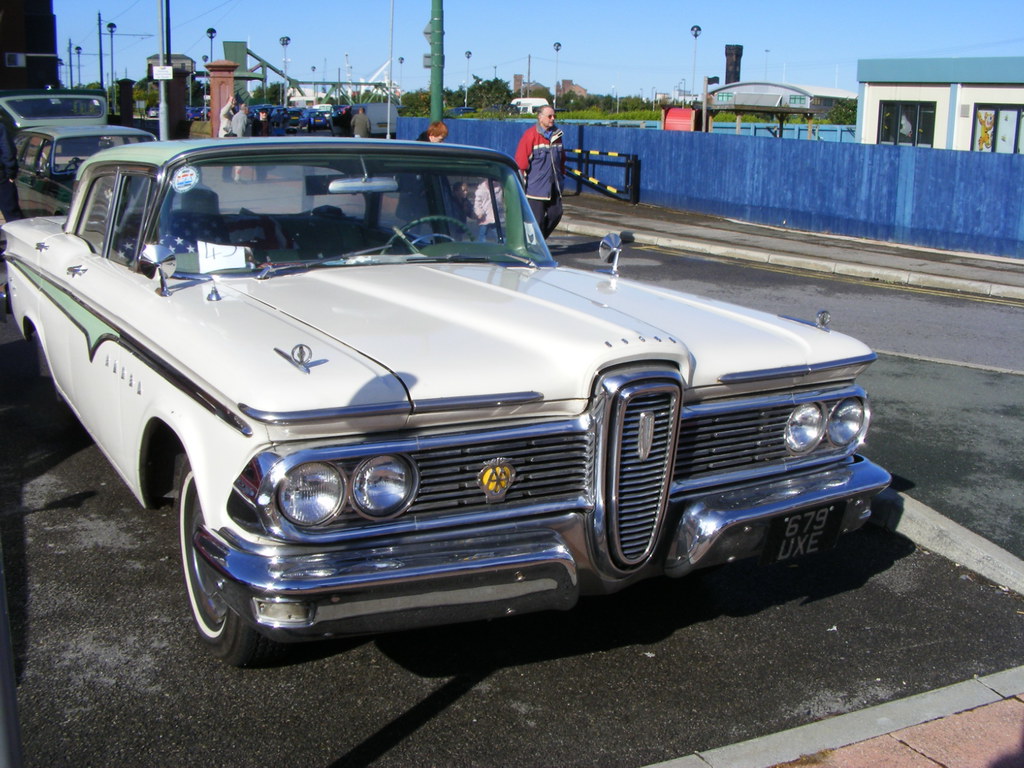
1. **Ford Edsel**Ah, the Ford Edsel. If there’s one name synonymous with automotive failure, this is it. Introduced in 1958, the Edsel was meant to be Ford’s answer to the burgeoning middle-class market, a sophisticated new line positioned comfortably between the basic Ford and the upscale Mercury. Expectations were sky-high, backed by a massive marketing campaign, but the reality was a very different story. The Edsel quickly cemented its place in history, though not for the reasons Ford had hoped.
Numerous issues plagued the Edsel from the get-go, extending beyond just its looks. Early reports detailed a host of quality control problems, with consumers complaining about faulty welds and notorious leaky trunks. Compounding these mechanical woes was a feature called Teletouch, an innovative but overly complicated push-button transmission selector located in the steering wheel hub, which baffled many drivers and proved notoriously unreliable. It was a technological leap that landed with a thud.
Yet, perhaps the most damaging blow to the Edsel was its public perception, particularly regarding its aesthetics. The design, spearheaded by a distinctive and highly controversial “horse-collar” grille, was widely seen as unattractive and odd. It was a stylistic choice that aimed for bold originality but instead struck many as ungainly and out of sync with contemporary tastes. The Edsel’s styling was seen as overly ambitious and out of touch with consumer desires, a visual miscalculation that proved fatal.
Coupled with mechanical issues, poor marketing, and a price tag that felt unjustified, the Edsel simply failed to attract buyers. It was a car that consumers didn’t connect with, neither functionally nor emotionally. Ford produced the Edsel for just three short years, from 1958 to 1960, before pulling the plug on what became one of the most infamous and costly flops in automotive history. The very name “Edsel” has since become an automotive byword for commercial failure.
Car Model Information: 1958 Edsel Citation
BirthName: Edsel Bryant Ford
Caption: Ford in 1921
BirthDate: [object Object]
BirthPlace: Detroit, Michigan
DeathDate: [object Object]
DeathPlace: Grosse Pointe Shores, Michigan
Occupation: Automobile executive
Title: Ford Motor Company
Spouse: [object Object]
Parents: Henry Ford,Clara Bryant Ford
Relations: Edsel Ford II
Children: Henry Ford II,Benson Ford,Josephine Ford,William Clay Ford Sr.
Categories: 1893 births, 1943 deaths, 20th-century American businesspeople, All Wikipedia articles written in American English, All articles with dead external links
Summary: Edsel Bryant Ford (November 6, 1893 – May 26, 1943) was an American business executive and philanthropist, who was the only child of pioneering industrialist Henry Ford and his wife, Clara Jane Bryant Ford. He was the president of the Ford Motor Company from 1919 until his death in 1943.
He worked closely with his father, as sole heir to the business, but was keen to develop cars more exciting than the Model T (“Tin Lizzie”), in line with his personal tastes. Even as president, he had trouble persuading his father to allow any departure from this formula. Only a change in market conditions enabled him to develop the more fashionable Model A in 1927. Edsel also founded the Mercury division and was responsible for the Lincoln-Zephyr and Lincoln Continental. He introduced important features, such as hydraulic brakes, and greatly strengthened the company’s overseas production.
Ford was a major art benefactor in Detroit and also financed Admiral Richard Byrd’s polar explorations. He died of stomach cancer aged 49. Henry Ford temporarily reassumed the presidency of Ford Motor Company on Edsel’s death, then Edsel’s eldest son, Henry Ford II, succeeded Henry as president of the company in 1945.
He was also a member of the board of directors of American IG, the American subsidiary of the German chemical conglomerate IG Farben.
Get more information about: Edsel Ford
Buying a high-performing used car >>>
Brand: Ford Model: Edsel
Price: Not Priced Mileage: 68,904 mi.
Read more about: 19 Cars Flops of the 1950s: Why They Failed
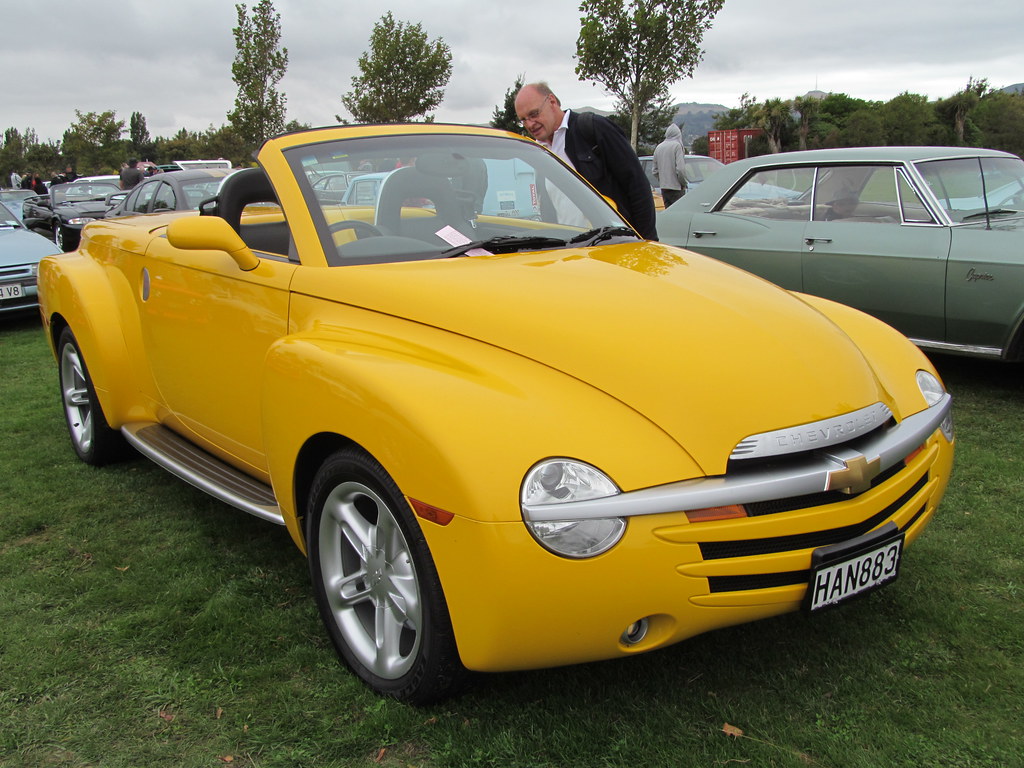
2. **Chevrolet SSR**Next up, we have a vehicle that truly blurred the lines of automotive classification: the Chevrolet SSR, or Super Sport Roadster. This was no ordinary truck or sports car; it was a distinctive blend of a retro-styled pickup and a convertible, a truly unique concept that hit the market in 2003. Chevrolet was clearly aiming for nostalgia and creativity, hoping to tap into a niche market that appreciated bold, unconventional design.
However, the SSR struggled significantly to find its footing, ultimately failing to meet sales expectations during its production run from 2003 to 2006. Critics and potential buyers alike quickly pointed out its major drawbacks. For one, the vehicle came with a high price tag, which was a tough pill to swallow for a vehicle that offered limited cargo space, negating much of the traditional utility expected from a pickup truck. It was a novelty, but an expensive one with practical compromises.
The design itself, while undeniably eye-catching and a conversation starter, proved to be quite polarizing. Its bulbous shape and overt retro cues didn’t appeal to everyone, and for many, the aesthetic was simply too niche to justify the cost and functional compromises. Some buyers also found the ride surprisingly uncomfortable, and its performance, despite the “Super Sport” moniker, was often described as lacking compared to dedicated sports cars or even more capable trucks. Early models, featuring a 5.3-liter V8, struggled to deliver the expected power.
Despite its innovative concept and striking looks, the SSR never truly managed to carve out a sustainable place in the market. It attempted to combine style and utility, but the result was often seen as underwhelming, failing to deliver a cohesive and compelling package. The SSR remains a memorable example of an automotive misstep, a vehicle where bold ambition perhaps outran practical execution and broad market appeal. It stands as a testament to how even well-intended creative risks can sometimes miss the mark.
Car Model Information: 2004 Chevrolet SSR LS
Name: Chevrolet SSR
Manufacturer: Chevrolet
Production: 2003–2006
ModelYears: 2003–2006
Assembly: Lansing, Michigan
Class: Pickup truck
BodyStyle: ubl
Platform: GMT360
Related: ubl
Layout: Front-engine, rear-wheel drive layout
Engine: ubl
Transmission: ubl
Wheelbase: 116.0 in
Abbr: on
Length: ubl
Width: 78.6 in
Height: ubl
Designer: ubl
Categories: All articles needing additional references, All articles with unsourced statements, Articles needing additional references from July 2008, Articles with short description, Articles with unsourced statements from August 2023
Summary: The Chevrolet SSR (Super Sport Roadster) is a retro-styled and retractable hardtop convertible pickup truck manufactured by Chevrolet between 2003 and 2006.
During the 2003 and 2004 model years, the SSR used General Motors’ 5.3 L 300 hp (224 kW; 304 PS) Vortec 5300 V8. Performance was 7.7 seconds for 0–60 mph (0–97 km/h) with a 15.9 second 1⁄4 mile (402.3 m) time at 86.4 mph (139.0 km/h).
For the 2005 model year, the SSR used the 390 hp (291 kW; 395 PS) LS2 V8 engine also used in the C6 Corvette, Trailblazer SS, and Pontiac GTO, now offering a manual transmission option, the six-speed Tremec, for the first time. Performance improved dramatically with the LS2; the 6-speed manual version had an advertised 0–60 mph (97 km/h) acceleration time of 5.29 seconds. In addition, GM badges were added to the vehicle.
For 2006, output of the LS2 increased to 395 hp (295 kW; 400 PS).
Get more information about: Chevrolet SSR
Buying a high-performing used car >>>
Brand: Chevrolet Model: SSR
Price: $20,899 Mileage: 54,685 mi.
Read more about: Your Definitive Guide to Choosing the Right Family SUV for 2025: Safety, Value, and Performance Unpacked

3. **Cadillac XLR / XLR-V**The Cadillac XLR, introduced in 2004, was Cadillac’s ambitious foray into the luxury sports car segment, built on the same acclaimed platform as the Chevrolet Corvette. On paper, it sounded like a winning formula: Corvette performance wrapped in Cadillac luxury and distinctive styling, aimed squarely at a discerning market looking for American prestige with a sporty edge. Yet, despite its promising design and upscale features, the XLR struggled to find buyers, becoming a significant automotive flop for the venerable brand.
One of the primary issues critics quickly identified was the XLR’s pricing. Many argued that it was simply too high for its perceived market value, failing to offer a compelling enough proposition when compared to established European luxury roadsters. Furthermore, while sharing its bones with the Corvette, the XLR often lacked the raw performance and driving dynamics that serious sports car enthusiasts expected, feeling a bit subdued despite its powerful engine options.
Cadillac did attempt to address the performance critique with the XLR-V variant, which boasted a more potent engine, hoping to boost its appeal to a performance-oriented clientele. However, even this more powerful version failed to impress a broad enough audience, leading to continued disappointing sales figures. It seemed that even with added horsepower, the XLR couldn’t quite shake off its image as an overpriced luxury cruiser rather than a true sports car competitor.
The marketing efforts for the XLR also appeared to miss their mark, which undeniably contributed to its eventual decline. Many industry observers believe that General Motors did not effectively communicate the car’s unique advantages or properly define its target audience. Without a clear identity and a strong narrative, the XLR struggled to differentiate itself in a crowded and highly competitive luxury segment, leaving potential buyers confused about its purpose and value proposition.
The Cadillac XLR is often remembered as one of the brand’s more significant missteps. It serves as a compelling case study on the critical importance of market alignment, effective branding, and delivering on performance expectations, especially when attempting to fuse luxury with sport in the fiercely competitive high-end automotive landscape. A noble attempt, but one that highlights the challenges of brand extension without clear market understanding.
Car Model Information: 2004 Cadillac XLR Base
Name: Cadillac XLR
Manufacturer: Cadillac
Production: 2003–2009
ModelYears: 2004–2009
Predecessor: Cadillac Allanté
Class: Grand tourer
BodyStyle: roadster (automobile)
Layout: FR layout
Platform: GM Y platform
Assembly: Bowling Green, Kentucky
Designer: Tom Peters (prod. exterior: 1999, 2000)
Related: Chevrolet Corvette (C5),Chevrolet Corvette (C6)
Transmission: GM 5L40-E transmission#5L50,GM 6L80 transmission
Engine: Northstar engine series#LH2 (VIN “A”),V8 engine
Wheelbase: cvt
Length: cvt
Width: cvt
Height: cvt
Weight: cvt
Categories: All Wikipedia articles written in American English, Articles with short description, Cadillac vehicles, Cars discontinued in 2009, Cars introduced in 2003
Summary: The Cadillac XLR is a convertible car which was manufactured and marketed by Cadillac from 2003 to 2009 across a single generation. It is a two-seat roadster and has a power retractable hardtop. The XLR was introduced at the 2003 North American International Auto Show as a halo model for Cadillac, and began production for the 2004 model year. The design was inspired by the 1999 Evoq concept.
The XLR shares much of its construction design with the C6 Chevrolet Corvette that was introduced one year later, including its GM Y platform, hydroformed steel perimeter side rails, folded steel backbone, tubular steel front and rear bulkheads, aluminum windshield structure, magnesium steering-column mounts, aluminum/balsawood composite floorboards and composite bodywork technology. Unique to the XLR are its engine, bodywork, interior, suspension settings, and power retractable hardtop. Both Chevrolet and Cadillac were manufactured at GM’s Bowling Green Assembly, with the XLR manufactured at a dedicated work station adjacent to the Corvette assembly line, engineered to facilitate routing of componentry to the XLR’s dedicated assembly station.
The XLR entered production a year before the Chevrolet, as the first production Cadillac with radar-based adaptive cruise control (ACC) or both heated and cooled seats — was subsequently nominated for the North American Car of the Year award for 2004. It has Bulgari designed interior instruments, head-up display, adaptive suspension, rear-mounted transmission and near 50/50 front-to-rear weight distribution.
Get more information about: Cadillac XLR
Buying a high-performing used car >>>
Brand: Cadillac Model: XLR
Price: $35,999 Mileage: 3,370 mi.
Read more about: Automotive Icons Unraveled: The Definitive Account of 15 Star Brands and Models That Fell From Grace
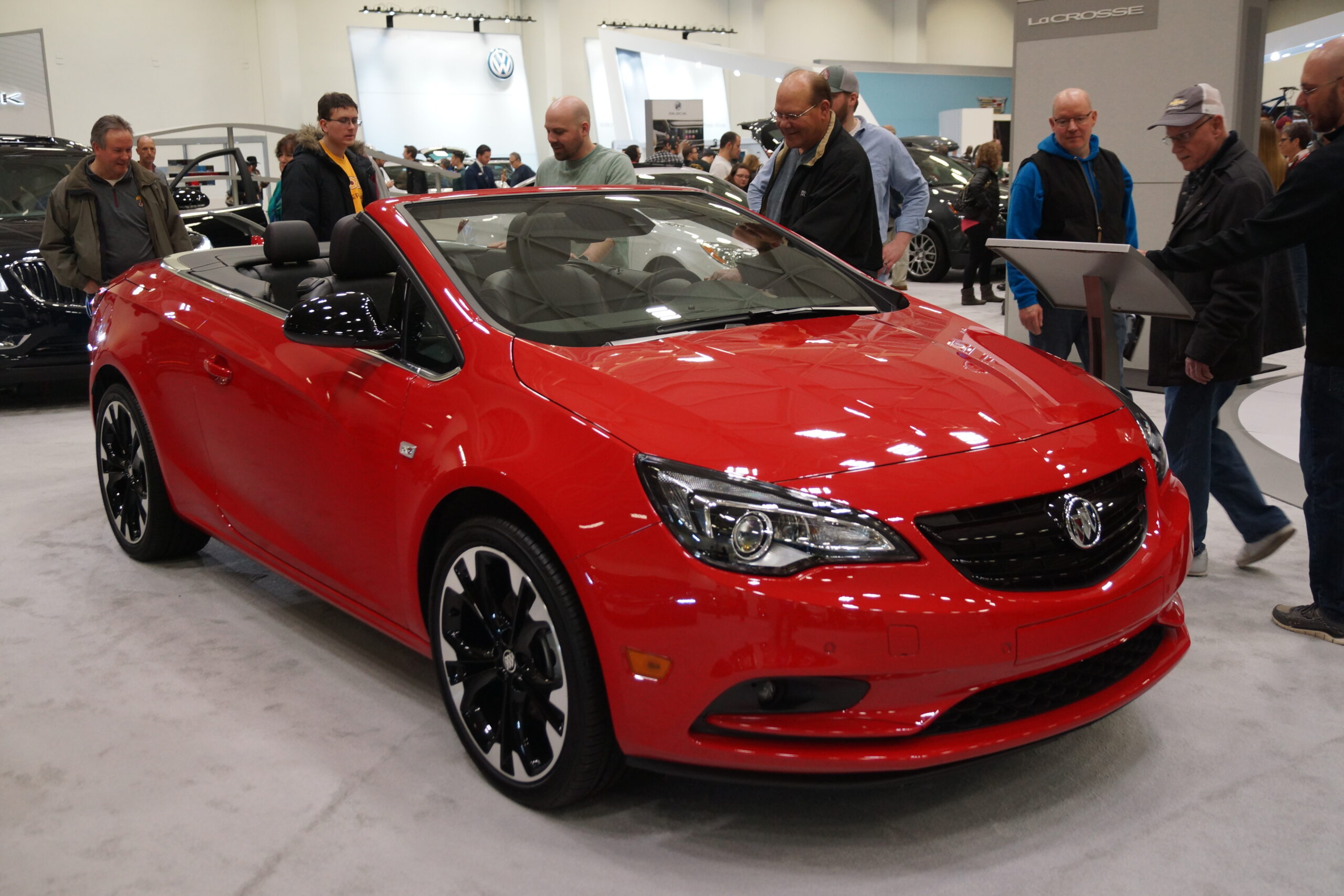
4. **Buick Cascada**For many years, the convertible market was a distant memory for Buick, but that changed with the introduction of the Buick Cascada in 2016. It was designed to offer stylish open-air driving, marking the brand’s hopeful return to a segment it had largely abandoned. The Cascada arrived with an attractive, contemporary design, promising a blend of Buick’s quiet luxury with the exhilarating freedom of a drop-top. Yet, despite its appealing aesthetics, the Cascada struggled profoundly in the competitive convertible market.
Sales figures for the Cascada were consistently lower than expected, a clear indicator that it failed to resonate with a broad enough consumer base. This lukewarm reception ultimately led to its discontinuation in 2019, making its tenure remarkably brief. Many viewed the Cascada as a missed opportunity for Buick, a car that had potential but couldn’t quite hit the sweet spot in a niche segment already dominated by more established players and compelling offerings.
Critics often pointed to its pricing as a significant hurdle. While it offered an attractive design, the Cascada was perceived as being priced too high for what it delivered, especially for a midsize car that didn’t quite deliver the sporty performance expected from rivals in the convertible segment. It occupied an awkward middle ground, not quite a luxury convertible, nor a budget-friendly option, leaving it without a clear unique selling proposition.
In various reviews, the Cascada typically received mixed feedback. It was frequently praised for its notably comfortable ride, a hallmark of Buick’s focus on refinement, and its upscale interior materials. However, these positives were often overshadowed by criticisms regarding its performance, which many felt lacked the spirited engagement found in competing convertible models. It felt more like a relaxed cruiser than a dynamic driving machine, which wasn’t what many convertible buyers were looking for.
Ultimately, the Buick Cascada became known as a symbol of misunderstanding in automotive design and market placement. It was certainly a stylish option, but it failed to connect with buyers who were seeking more than just aesthetics. Its story is a reminder that in the automotive world, even a beautiful face isn’t enough; a vehicle needs to offer a compelling package of performance, value, and distinct identity to truly succeed.
Car Model Information: 2017 Buick Cascada Premium
Name: Opel Cascada
Manufacturer: Opel
Aka: Buick
Production: 2013–2019
Assembly: Gliwice
Predecessor: Opel Astra#H
Class: Compact car
BodyStyle: convertible
Layout: Front-engine, front-wheel-drive layout
Platform: GM Delta platform
Engine: ubl
Transmission: GM F40 transmission,Manual transmission
Wheelbase: 2695 mm
Abbr: on
Length: 4696 mm
Width: 1839 mm
Height: 1443 mm
Weight: convert
Related: Opel Astra
Designer: Mark Adams (designer)
Categories: Articles with short description, Cars discontinued in 2019, Cars introduced in 2013, Cars of Poland, Commons category link is on Wikidata
Summary: The Opel Cascada is a four-passenger fabric-roof convertible, manufactured and marketed by Opel across a single generation for model years 2013 through 2019, prioritizing year-round touring comfort over sportiness.
Nearly identical badge engineered variants were marketed globally using the Cascada nameplate under four General Motors brands: Opel, Vauxhall, Holden, and Buick. It was also sold under the Opel Cabrio nameplate in Spain.
The 2+2 convertible was engineered at Opel’s International Technical Engineering Center in Rüsselsheim, Germany, and was styled under the direction of Mark Adams, head of Opel design, at Opel’s Rüsselsheim Design Center, with Andrew Dyson (exterior) and Elizabeth Wetzel (interior).
After debuting at the 2012 Geneva Auto Show, the brand variants were manufactured in Gliwice, Poland, up until assembly ended on 28 June 2019, with a combined total of 48,500 produced and the final Cascada manufactured for the US market.
The Cascada derives its name from the Spanish word for waterfall.
Get more information about: Opel Cascada
Buying a high-performing used car >>>
Brand: Buick Model: Cascada
Price: $16,189 Mileage: 56,824 mi.
Read more about: Buyer Beware: Navigating the Complexities of Convertible Tops – 12 Critical Issues That Could Ruin Your Summer Drive
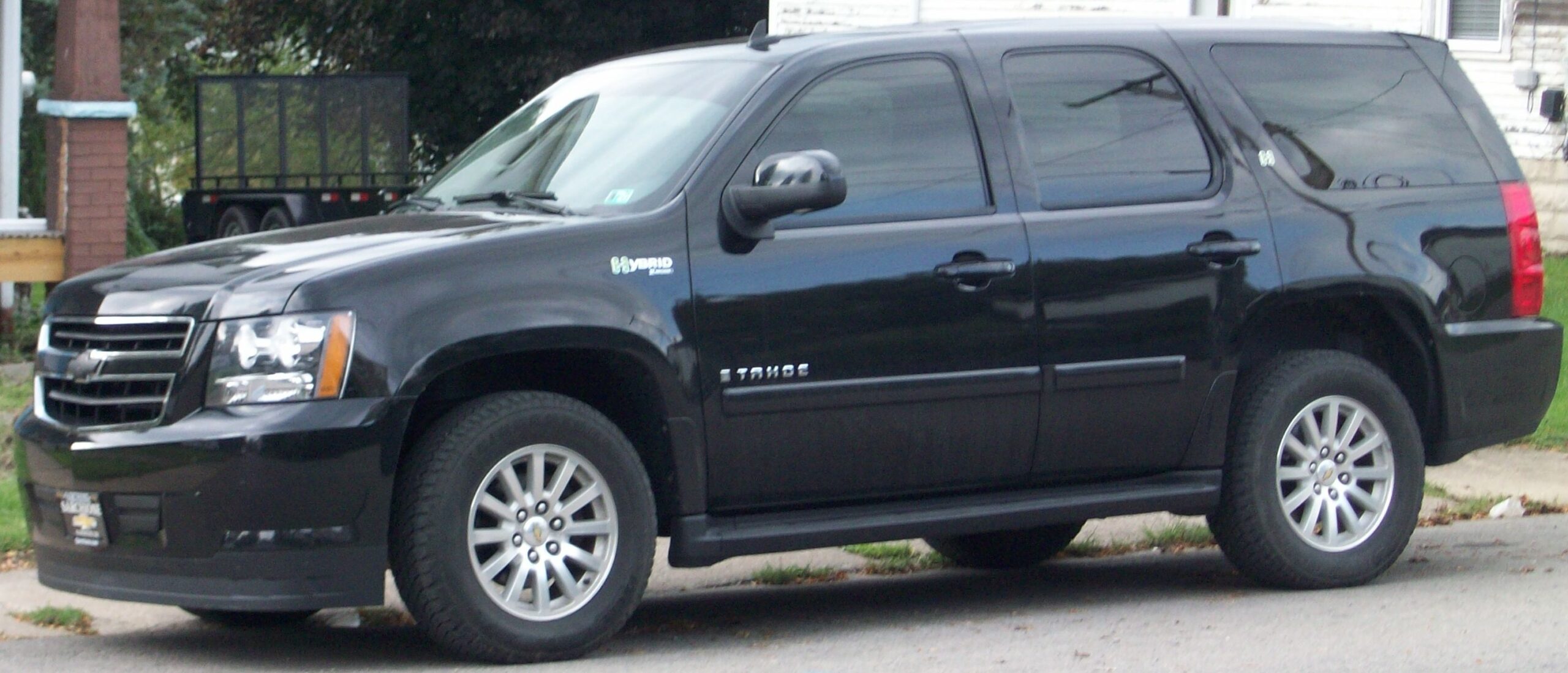
5. **Chevrolet Tahoe Hybrid**The Chevrolet Tahoe Hybrid was introduced with noble intentions: to combine the formidable power and utility of a full-size SUV with the enhanced fuel efficiency of a hybrid powertrain. It was an ambitious undertaking, aiming to offer the best of both worlds in an era when environmental concerns and rising fuel prices were becoming increasingly relevant for consumers. However, despite its promising concept, the Tahoe Hybrid faced numerous challenges after its release, ultimately falling short in several key areas.
Many drivers who invested in the Tahoe Hybrid reported significant disappointment, largely centered around the hybrid system’s reliability and performance. Issues ranged from inconsistent operation of the complex hybrid components to higher-than-expected maintenance costs, which quickly eroded the perceived value and practicality of choosing the hybrid variant over a traditional gasoline-powered Tahoe. This unreliability made ownership a frustrating experience for many.
Adding to the woes, the actual fuel economy ratings achieved in real-world driving conditions were often lower than what was advertised or expected. For many potential buyers, this discrepancy removed a significant incentive for choosing the hybrid model, as the promised savings at the pump didn’t materialize as effectively as hoped. The core benefit of the hybrid system, its efficiency, was thus undermined, making it a difficult sell.
The Tahoe Hybrid struggled immensely in a highly competitive SUV market, which was already saturated with more reliable, often more affordable, and sometimes even more efficient traditional SUV options. The initial novelty of a hybrid full-size SUV wasn’t enough to overcome its practical shortcomings and the skepticism from consumers who were looking for proven performance and value. It was a market segment unforgiving of half-measures.
As a result of these compounding factors, consumers frequently chose conventional SUVs over the hybrid model, leading to consistently low sales figures. This pervasive lack of interest contributed significantly to the Chevrolet Tahoe Hybrid being widely considered a commercial failure. It serves as a stark example of how even a forward-thinking concept can stumble without flawless execution, robust reliability, and a clear, compelling value proposition for the end-user.
Our journey through automotive history’s most compelling blunders now takes us beyond the mainstream, diving into vehicles that truly defied convention, for better or, more often, for worse. These next four entries highlight how radical thinking, while sometimes leading to breakthroughs, can just as easily pave the way for monumental, yet endlessly fascinating, flops. Get ready for some serious head-scratchers and a few “what were they thinking?” moments.
Car Model Information: 2023 Toyota Camry XLE
Name: Chevrolet Tahoe,GMC Yukon
Manufacturer: General Motors
Production: 1991–present (Yukon),1994–present (Tahoe)
Class: Full-size SUV
Related: Cadillac Escalade,Chevrolet Suburban,Chevrolet Silverado,Hummer H2
Layout: Front-engine, rear-wheel-drive layout
Predecessor: Chevrolet K5 Blazer
Caption: 2022 Chevrolet Tahoe RST (fifth generation)
Categories: 2000s cars, 2010s cars, 2020s cars, All-wheel-drive vehicles, All articles with unsourced statements
Summary: The Chevrolet Tahoe () is a line of full-size SUVs from Chevrolet marketed since the 1995 model year. Marketed alongside the GMC Yukon for its entire production, the Tahoe is the successor of the Chevrolet K5 Blazer; the Yukon has replaced the full-sized GMC Jimmy. Both trucks derive their nameplates from western North America, with Chevrolet referring to Lake Tahoe; GMC, the Canadian Yukon.
Initially produced as a three-door SUV wagon, a five-door wagon body was introduced for 1995, ultimately replacing the three-door body entirely. The five-door wagon shares its body with the Chevrolet and GMC Suburban (today, GMC Yukon XL) as a shorter-wheelbase variant. Since 1998, the Tahoe has served as the basis of the standard-wheelbase GMC Yukon Denali and Cadillac Escalade luxury SUVs. The Tahoe is sold in North America, parts of Asia such as the Philippines, and the Middle East, plus other countries including Bolivia, Chile, Peru, Colombia, Ecuador, and Angola as a left-hand-drive vehicle. The Yukon is only sold in North America and the Middle East.
The Tahoe has regularly been the best-selling full-size SUV in the United States, frequently outselling its competition by two to one.
Get more information about: Chevrolet Tahoe
Buying a high-performing used car >>>
Brand: Chevrolet Model: Tahoe Hybrid
Price: $23,895 Mileage: 44,570 mi.
Read more about: Your Definitive Guide to Choosing the Right Family SUV for 2025: Safety, Value, and Performance Unpacked
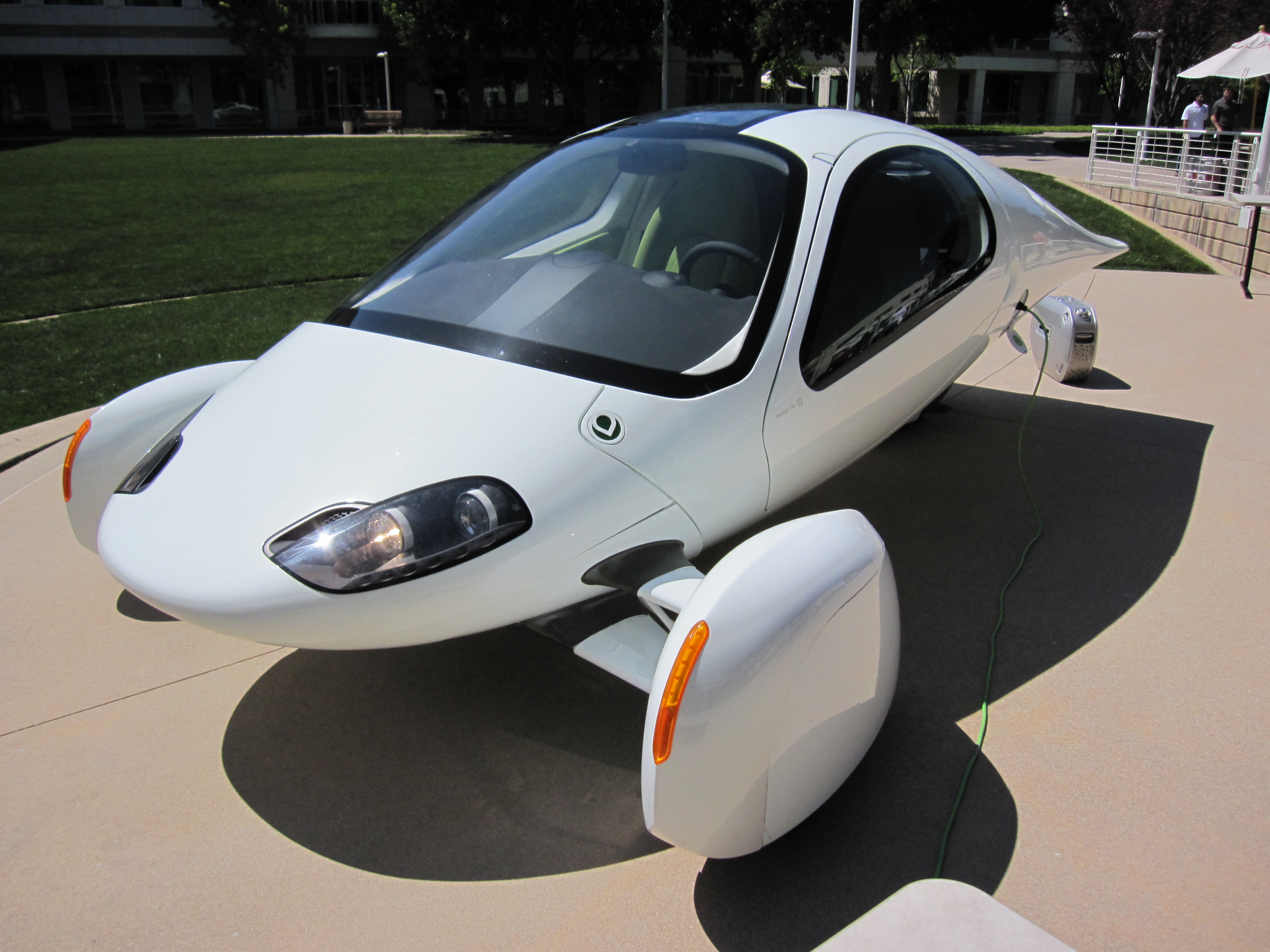
6. **Aptera Motors 2e**If you’re looking for a vehicle that truly embodied innovative design and pushed the boundaries of efficiency, the Aptera Motors 2e was certainly it. This electric vehicle aimed to impress with its incredibly unique three-wheeled structure, a design choice that instantly made it stand out from anything else on the road. It wasn’t just about aesthetics; the streamlined, almost aerospace-inspired shape was meticulously crafted for aerodynamic superiority, promising unprecedented levels of energy efficiency in an automotive world just beginning to seriously consider electric propulsion.
The 2e’s vision was audacious: a highly efficient, lightweight electric vehicle that could revolutionize daily commuting. Many people genuinely admired the 2e for its potential to redefine personal transportation, offering a glimpse into a future where vehicles were sleek, sustainable, and utterly distinctive. It was a concept that sparked significant interest among environmental advocates and tech enthusiasts alike, suggesting a new paradigm for urban mobility that prioritised sustainability without sacrificing innovative flair.
However, even the brightest ideas can stumble when faced with harsh realities, and Aptera tragically faced significant challenges on its path to production. The dream of mass-producing this groundbreaking electric vehicle was ultimately derailed by the prevailing economic conditions of the time, creating a notoriously difficult environment for securing the substantial investments needed to bring such a complex and novel design to market. This lack of crucial financial backing proved to be an insurmountable hurdle, ultimately leading to the company shutting down in 2011.
Beyond the macro-economic headwinds, the 2e also struggled to deliver on its ambitious promises in practical terms, specifically concerning the thorny issues of production and effective management. Transforming a visionary concept into a viable, mass-producible product is a Herculean task, and Aptera found itself grappling with the intricate complexities of scaling manufacturing for such an unconventional design. These internal struggles, compounded by the external financial pressures, created a perfect storm that grounded the Aptera’s flight before it truly had a chance to take off.
The saga of Aptera Motors and its 2e model stands as a powerful and poignant highlight of the inherent difficulties that electric vehicle startups frequently encounter. Despite having a truly novel and forward-thinking concept that captivated imaginations, the 2e simply could not overcome these compounding obstacles. Its story remains a cautionary tale in the often-brutal auto industry, starkly demonstrating that even the most brilliant and eco-conscious ideas can tragically fail without essential backing and robust, real-world execution.
Car Model Information: 2023 Toyota Camry XLE
Name: Aptera Motors Corp.
Logo: Apteralogo.png
LogoSize: 200px
Type: Private company
Founded: 2019
Founders: Unbulleted list
NumEmployees: 33
NumEmployeesYear: 2024
HqLocationCity: Carlsbad, California
HqLocationCountry: United States
AreaServed: not yet in production
KeyPeople: Unbulleted list
Industry: Automotive industry
Products: Aptera solar EV
NetIncome: Unbulleted list
Class: nowrap
Assets: Unbulleted list
Homepage: aptera.us
Categories: 2005 establishments in California, 2011 disestablishments in California, 2019 establishments in California, All articles containing potentially dated statements, Articles containing potentially dated statements from 2006
Summary: Aptera Motors Corp. is an American crowdfunded, pre-production startup company based in Carlsbad, California which intends to manufacture an electric two-seat three-wheeler. The company had raised $140 million from 2019 to April 2025, and had planned to start deliveries of its vehicles since 2021. As of April 2025, initial sales of the vehicle are planned for 2026 and full-scale production is planned for 2028, with the company intending to raise $60 million for the start of low-volume production.
Aptera Motors Inc. was founded in 2006. The company was liquidated in 2011 with no vehicles mass-produced. A second company named Aptera USA owned by Zhejiang Jonway Group was launched in 2012 but it produced no vehicles. A third company, Aptera Motors Corp, was relaunched by the original founders in 2019.
Get more information about: Aptera Motors
Buying a high-performing used car >>>
Brand: Aptera Motors Model: 2e
Price: $23,895 Mileage: 44,570 mi.
Read more about: Automotive Icons Unraveled: The Definitive Account of 15 Star Brands and Models That Fell From Grace
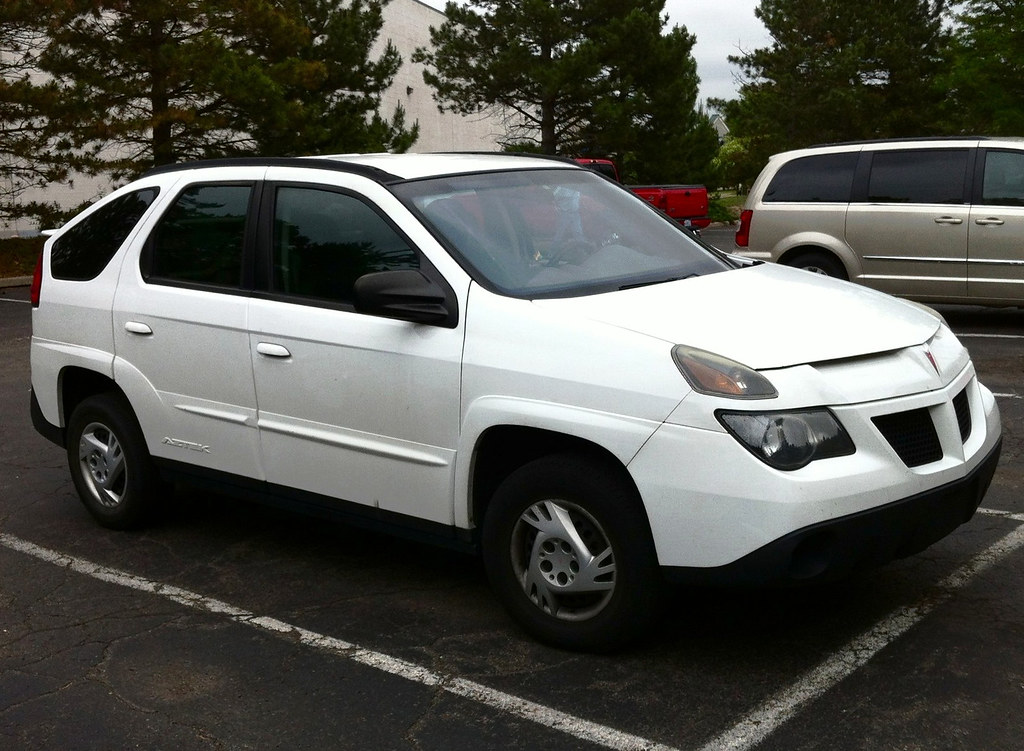
7. **Pontiac Aztek**Ah, the Pontiac Aztek. If ever there was a vehicle that embodied the phrase “ahead of its time,” while simultaneously being lambasted for its aesthetics, it was this compact SUV. Introduced in 2001, the Aztek represented Pontiac’s earnest, albeit spectacularly misguided, attempt to attract a younger, more adventurous demographic. It packed genuinely innovative features for its era, such as an optional tent package and a built-in cooler, aiming to be the ultimate mobile basecamp for the active lifestyle set. The ambition was palpable; the execution, less so.
From the moment it rolled off the assembly line, the Aztek became notorious for its appearance, almost instantly cementing its place in the pantheon of automotive design controversies. Many critics and the general public alike did not mince words, swiftly labeling it “one of the ugliest cars ever made.” Its bizarre, angular design, replete with awkward proportions and a clunky rear end, proved to be an instant turn-off for potential buyers. It was a stylistic gamble that backfired spectacularly, creating a visual disconnect that few could overlook.
The public’s intense dislike for its polarizing aesthetics translated directly into dismal sales figures, illustrating just how crucial visual appeal is, even for a vehicle boasting practical innovations. The Aztek struggled profoundly to find a sustainable market, indicating a fundamental misjudgment of consumer taste and design preferences. Despite its engineers’ best intentions and some truly useful interior features, the overwhelming negativity surrounding its exterior design was an anchor it could never lift.
Its reputation has, perhaps ironically, remained incredibly strong, frequently appearing in discussions and retrospectives about automotive failures. The Aztek’s enduring infamy is almost exclusively attributed to its controversial styling and what many consider to be poorly conceived marketing strategies that failed to bridge the gap between its utilitarian innovations and its polarizing looks. It was a vehicle that aimed for rugged versatility but presented an aesthetic that few were willing to embrace.
While a small, devoted cadre of enthusiasts has since come to appreciate its quirky features and undeniable practicality, the general opinion still heavily leans toward disdain when the Aztek is mentioned. Today, this bold, yet visually jarring, experiment serves as an indelible reminder of how profoundly important design and immediate consumer appeal are in the cutthroat automotive industry. Sometimes, even when you try to offer everything, if the package isn’t right, it’s all for naught.
Car Model Information: 2003 Pontiac Aztek Base Fwd 4dr SUV
Name: Pontiac Aztek
Manufacturer: General Motors
Production: July 2000 – December 2004
Assembly: Ramos Arizpe
Designer: Tom Peters (chief designer: 1997)
Class: Mid-size crossover SUV
BodyStyle: SUV
Platform: GM U platform
Related: Buick Rendezvous
Layout: Front-engine, front-wheel-drive layout
Engine: General Motors 60° V6 engine#LA1,V6
Transmission: GM 4T65-E transmission,Automatic transmission
Wheelbase: 108.3 in (2,751 mm)
Length: 182.1 in (4,625 mm)
Width: 73.7 in (1,872 mm)
Height: 66.7 in (1,694 mm)
Weight: 3,779–4,043 lb (1,714–1,834 kg)
Predecessor: Pontiac Sunrunner
Successor: Pontiac Torrent
ModelYears: 2001–2005
Categories: All-wheel-drive vehicles, All articles needing additional references, All articles with unsourced statements, Articles needing additional references from October 2013, Articles with short description
Summary: The Pontiac Aztek is a mid-size crossover SUV marketed by General Motors introduced in 2000 for the model years 2001 through 2005. As a four-door crossover with front-wheel drive and optional all-wheel drive, the Aztek featured a four-speed automatic transmission with a V6 engine. Marketed by Pontiac as a “sport recreational vehicle,” the Aztek used a shortened platform shared with GM’s minivans (e.g., the Pontiac Montana) featuring 94 cubic feet of cargo room with its rear seats removed. The design employed conventional rear outswing doors rather than sliding doors, and a split rear tailgate, the lower section formed with seat indentations and cupholders. Other features included a front center console that doubled as a removable cooler, optional rear stereo controls in the cargo area, optional sliding cargo floor with grocery compartments, and optional camping package with an attachable tent and air mattress.
Get more information about: Pontiac Aztek
Buying a high-performing used car >>>
Brand: Pontiac Model: Aztek
Price: $1,499 Mileage: 157,677 mi.
Read more about: Automotive Hall of Shame: 16 Truly Ugly Cars
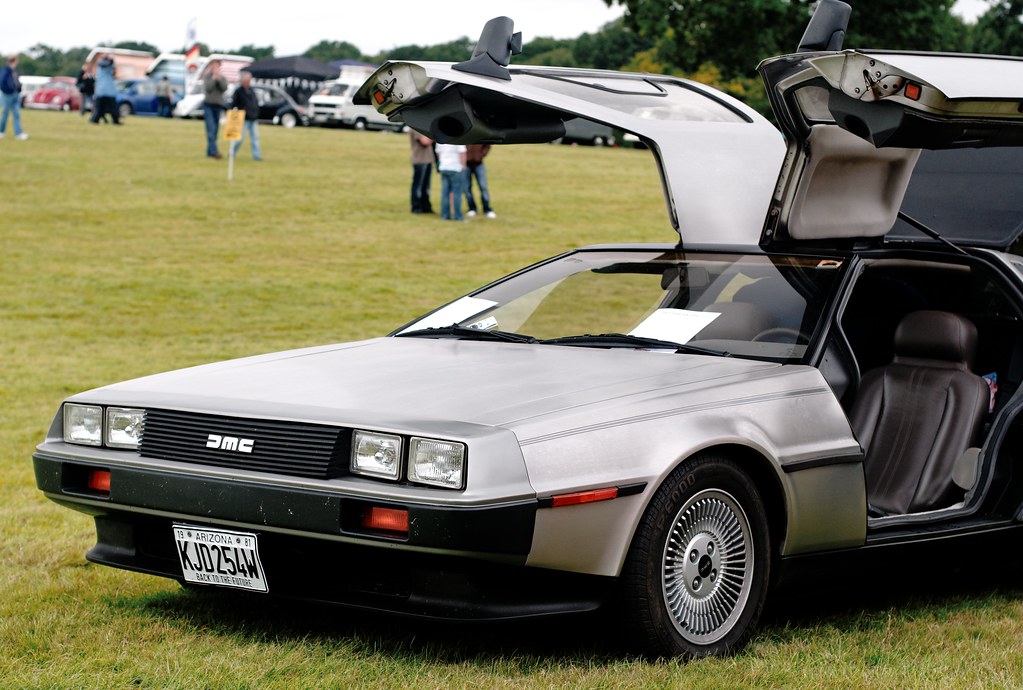
8. **DeLorean DMC-12**Stepping back into the annals of automotive legend, we arrive at the DeLorean DMC-12, a vehicle so distinct it became an icon, albeit largely due to its starring role in the “Back to the Future” films rather than its initial commercial success. Launched in the early 1980s, the DMC-12 was a rolling piece of futuristic design, instantly recognizable by its striking gull-wing doors and unpainted stainless steel body panels. It was a car that screamed innovation and individuality, a metallic dream machine sprung from the mind of John DeLorean himself, promising something truly different.
Despite its undeniably stylish and avant-garde looks, the DMC-12 faced significant challenges almost immediately after its debut. The car, while visually arresting, was notably underpowered for a sports car of its caliber, failing to deliver the exhilarating performance that its dramatic appearance suggested. This performance deficit was compounded by a litany of production issues that unfortunately led to persistent quality control problems, frustrating early owners and quickly tarnishing the vehicle’s reputation for reliability.
The struggles of the DeLorean Motor Company went beyond just the car itself; they highlight the perils of a nascent brand trying to break into a fiercely competitive industry. The company found it incredibly difficult to compete effectively with more established car manufacturers who boasted decades of experience, refined supply chains, and vast marketing budgets. Furthermore, there’s a strong argument to be made that they did not fully grasp the rising popularity of affordable, efficient imports that were beginning to flood the market, missing a crucial shift in consumer preference.
This lack of comprehensive market insight, combined with the vehicle’s inherent flaws and production woes, undeniably contributed to the rapid downfall of the DMC-12. Only about 9,000 units were ever produced before the company, tragically, faced bankruptcy, a stark testament to how even the most ambitious and visually captivating designs can falter without strong business planning, rigorous execution, and a clear understanding of the broader automotive landscape. It was a dream built on stainless steel that, regrettably, rusted before its time.
Today, the DeLorean remains an absolutely fascinating example of both soaring ambition and spectacular failure in the automotive industry. It powerfully illustrates how even the most eye-catching and culturally resonant designs can ultimately collapse without a robust foundation of performance, reliability, and market alignment. While it has deservedly gained a devoted cult following over time, its commercial journey unequivocally stands as a potent and enduring cautionary tale about the delicate balance required to turn vision into a sustainable reality.
Car Model Information: 1982 Delorean DMC-12
Name: DMC DeLorean
Alt: 1983 DeLorean
Caption: 1983 DeLorean
Manufacturer: DeLorean Motor Company
Production: January 21, 1981 – December 1982
ModelYears: 1981–1983
Assembly: Dunmurry
Designer: Giorgetto Giugiaro
Class: Sports car
BodyStyle: coupé
Layout: Rear-engine, rear-wheel-drive layout
Doors: Gull-wing doors
Engine: 2.85 L
Abbr: on
Powerout: 130 hp
Transmission: 5-speed manual ,3-speed automatic
Wheelbase: 2413 mm
Length: 4267 mm
Width: 1988 mm
Height: 1140 mm
Weight: 1233 kg
Sp: us
Categories: 1980s cars, All Wikipedia articles written in American English, Articles with short description, Automobiles with backbone chassis, Automobiles with gull-wing doors
Summary: The DMC DeLorean is a rear-engine, two-seat sports car manufactured and marketed by John DeLorean’s DeLorean Motor Company (DMC) for the American market from 1981 until 1983—ultimately the only car brought to market by the fledgling company. The DeLorean is sometimes referred to by its internal DMC pre-production designation, DMC-12, although this was not used in sales or marketing materials for the production model.
Designed by Giorgetto Giugiaro, the DeLorean is noted for its gull-wing doors and brushed stainless-steel outer body panels, as well as its lack of power and performance. Though its production was short-lived, the DeLorean became widely known after it was featured as the time machine in the Back to the Future films.
With the first production car completed on January 21, 1981, the design incorporated numerous minor revisions to the hood, wheels and interior before production ended in late December 1982, shortly after DMC filed for bankruptcy and after total production reached an estimated 9,000 units.
Despite the car having a reputation for poor build quality and an unsatisfactory driving experience, the DeLorean continues to have a strong following, driven in part by the popularity of Back to the Future. 6,500 DeLoreans were estimated to still be on the road as of 2015.
Get more information about: DMC DeLorean
Buying a high-performing used car >>>
Brand: DeLorean Model: DMC-12
Price: $129,950 Mileage: 3,145 mi.
Read more about: From the Silver Screen to the Garage: Uncovering the Fate of Hollywood’s 14 Most Iconic Movie and TV Cars
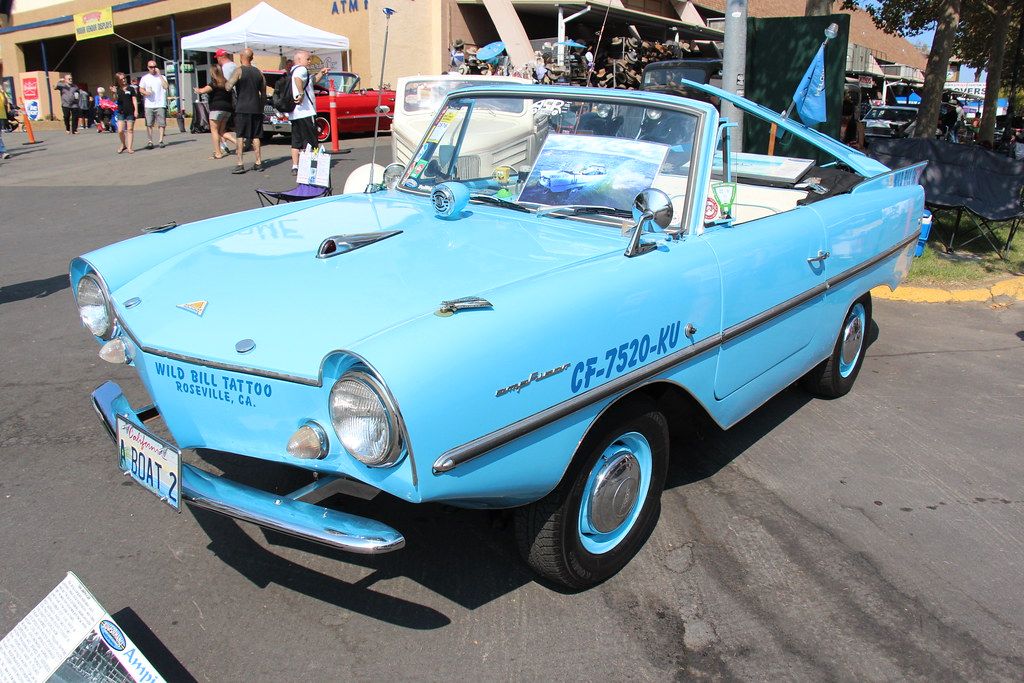
9. **Amphicar Model 770**Our final stop on this tour of automotive ambition gone awry brings us to a vehicle that truly blurred the lines, challenging the very definition of personal transport: the Amphicar Model 770. Emerging from the innovative spirit of the 1960s, this truly unique creation was “known for being both a car and a boat.” It was a marvel of dual-purpose engineering, a bold, almost whimsical concept that aimed to offer unparalleled freedom, allowing its owners to effortlessly transition from road to waterway. This audacious design was a monumental technical undertaking, promising a level of versatility that no other vehicle dared to offer.
However, the very ambition inherent in a dual-purpose design like the Amphicar 770 also introduced its most significant challenges and, ultimately, its undoing. To function adequately on both land and water, a vehicle inevitably has to make considerable concessions in both domains. It simply could not be as fast, agile, or comfortable as a dedicated road car, nor could it achieve the hydrodynamic efficiency, stability, or seaworthiness of a purpose-built boat. This intrinsic design conflict meant that while it could perform both roles, it arguably excelled at neither.
This fundamental compromise had a profound impact on its appeal and market resonance, making it a classic example of a “jack-of-all-trades, master of none” scenario. The sheer complexity of manufacturing a vehicle that required both watertight integrity and road-legal mechanics undoubtedly drove up its production costs significantly, placing it in a price bracket that was difficult for a novelty vehicle to justify. It became an expensive curiosity, demanding specialized maintenance and offering limited practical superiority over owning a separate car and a separate boat.
Connecting this back to the overarching theme of “design failures,” the Amphicar’s struggles highlight the perils of attempting to satisfy too many requirements with one singular design. While its innovation was undeniable, the very breadth of its intended functionality—trying to bridge two entirely different environmental requirements—made it an exceedingly challenging sell to a broad market. Consumers, by and large, gravitate towards specialized solutions that perform their intended function optimally, and the Amphicar’s generalized approach, despite its radical uniqueness, failed to capture a sustainable and significant market share.
The Amphicar Model 770 stands as a truly fascinating, albeit ultimately flawed, piece of automotive history. Its bold vision to literally bridge two worlds, to offer a seamless transition between land and water, regrettably became a profound cautionary tale about the pitfalls of design ambition pushed to its conceptual limits without a clear, practical market application. It is remembered as a “spectacular” design failure due to its inherent, albeit captivating, conceptual misjudgment and the inevitable compromises that came with trying to be two things at once.
Car Model Information: 2023 Toyota Camry XLE
Caption: Amphicar Model 770
Name: Amphicar Model 770
Manufacturer: Quandt Group
Production: 1960–1965,3,878 built
ModelYears: 1960–1968
BodyStyle: 2-door cabriolet,with boat features
Layout: RR layout
Engine: straight-4
Transmission: Manual transmission
Length: 171 in
Abbr: oncite book
Width: 62 in
Height: 60 in
Weight: convert
Wheelbase: 84 in
Last: Cardew
First: Basil
Title: Daily Express Review of the 1966 Motor Show
Year: 1966
Publisher: Beaverbrook Newspapers Ltd
Location: London
Designer: Hans Trippel
Powerout: 38 bhp
Categories: Articles with short description, CS1 maint: publisher location, Cars of Germany, Commons category link is on Wikidata, Rear-engined vehicles
Summary: The Amphicar Model 770 is an amphibious automobile which was launched at the 1961 New York Auto Show. It was made in West Germany and marketed from 1961 to 1968, with production ceasing in 1965.
Designed by Hans Trippel, the amphibious vehicle was manufactured by the Quandt Group at Lübeck and at Berlin-Borsigwalde, with a total of 3,878 manufactured in a single generation. The name Amphicar is a portmanteau of “amphibious” and “car”.
A spiritual descendant of the Volkswagen Schwimmwagen, and the Trippel SG6, the Amphicar offered only modest performance compared to most contemporary boats or cars, featured navigation lights and flag as mandated by the US Coast Guard – and after operation in water, required greasing at 13 points, one of which required removal of the rear seat.
In 2014, the publication Petrolicious described the Amphicar as “good for one thing: fun. It’s not quick or flashy, but it’s iconic, unique and friendly. What more could you ask from a vintage car? The Amphicar might not make any sense and that’s precisely why it’s so wonderful.”
Get more information about: Amphicar
Buying a high-performing used car >>>
Brand: Amphicar Model: Model 770
Price: $23,895 Mileage: 44,570 mi.
Read more about: The Assembly Line Anomaly: 15 Insanely Quirky Car Designs That Defied Convention and Made It To Production
These nine remarkable vehicles, from the infamous Edsel to the amphibious Amphicar, serve as compelling chapters in the story of automotive design. They remind us that innovation is a double-edged sword, capable of both groundbreaking success and spectacular failure. Each flop, whether due to aesthetic misjudgment, technological overreach, or a fundamental misunderstanding of the market, offers invaluable insights into the intricate dance between engineering prowess, consumer desire, and daring vision. The road to automotive greatness is indeed a challenging one, and these “biggest design failures” are not just cautionary tales, but fascinating lessons etched in the steel and plastic of history. They remind us that in the world of cars, sometimes the boldest statements are the ones that teach us the most about what not to do, ultimately guiding the industry towards its next great, and hopefully, more successful, designs.


